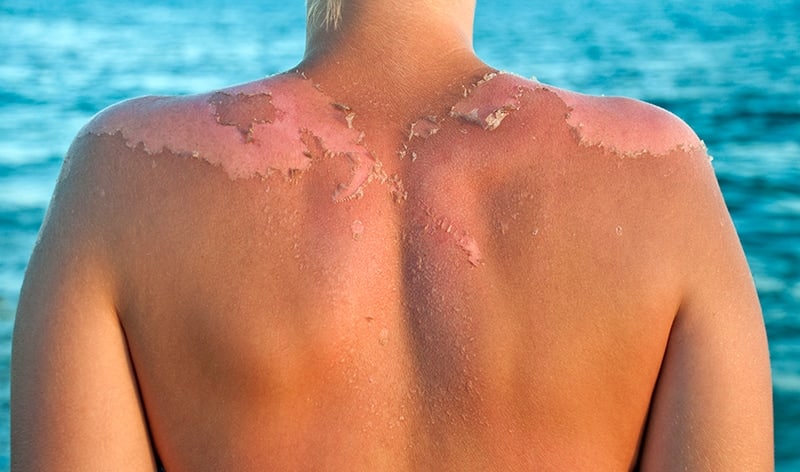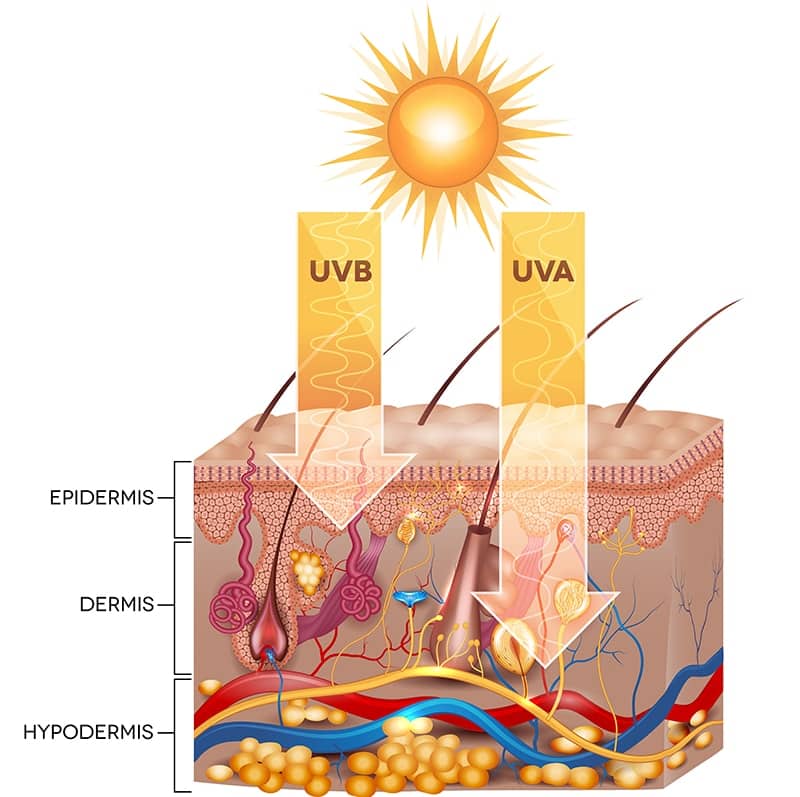One of the main functions of the skin is to protect the body from damage through exposure to UV (Ultraviolet) radiation from the sun. As a consequence however, with years of exposure to UV radiation, the skin becomes damaged and we term this Photodamage. The visible effect of sun damage on the surface of the skin varies in how it presents and will develop at different rates in different people.

Our approach to sun damage is a matter of priorities:
The sun can damage both the surface epidermal layer of the skin which contains pigment cells, and the deeper dermal layer that contains blood vessels and the collagen that gives skin structural support. As a result the main skin changes that we see from sun damage are to the colour (pigmentation and redness), contour (lines and wrinkles) and texture (dryness and roughness) of the skin.
Other cells in the skin such as basal cells and squamous cells can also be affected by UV and if the DNA in these cells is damaged then skin cancers can develop, what are called BCC (Basal cell carcinoma) or SCC (Squamous cell carcinoma). When the DNA of the pigment producing cells (melanocytes) is damaged the potentially very dangerous Melanoma can develop.

Treatment of sun-damaged skin depends on the degree of damage and the level of improvement required. The best results are achieved by a combination approach.
Treatment of sun-damaged skin depends on the degree of damage and the level of improvement required. The best results are achieved by a combination approach.
Before and after images are presented purely as a reference point of the results that can be achieved. Everyone is unique and outcomes will vary and realistic expectations need to be discussed on a case by case basis.
Got questions? Or ready to book in? Contact our experienced and friendly team to start your journey to healthy skin with us.